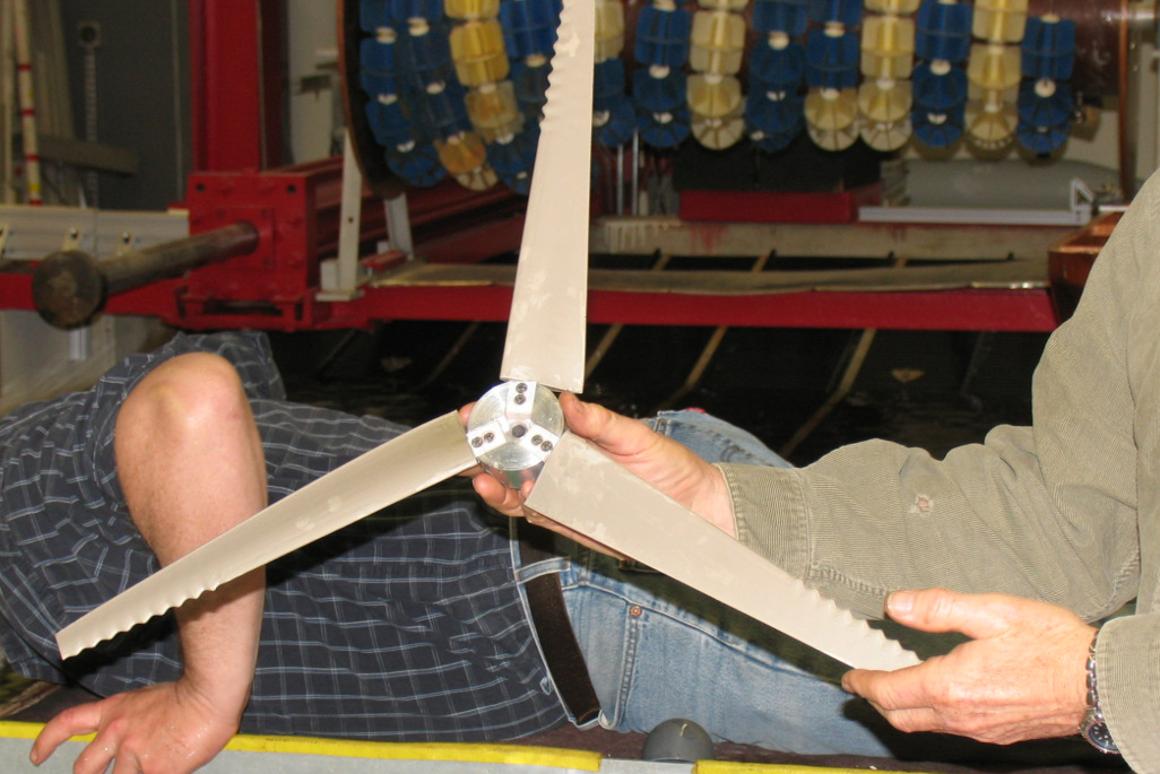ynot said:
If making fan blades the old main spar, ribs, fabric covered trailing edge, way;
Getting passable tubercles may be as simple as rounding the (many) ribs and covering the leading edge (top only?) with fabric too..?
Realize that this is an old thread, but the subject is near and dear to my heart.
On a small wind turbine, (under 6ft diam) there is little point in putting the work into complicated tip design.
The goal of any turbine that small, is to get it rotating fast enough to "fill the circle" ie spinning fast enough so that no air can pass through the circle without imparting its energy to the blade.
The energy to begin accelerating the blade(s) is generated at the root (center) of the blade, I built and sold many blades for wind turbines, and spent many hours on design. In practice we made the angle of attack as steep as the material would allow at the hub, and at the tip of a 4ft blade had an angle of around 0.5 degrees. You could see on an ammeter jump the moment that the blade filled its circle. Above that wind speed much of the design work was to get as much of the blade out of its own way, so that the blade could spin faster due to reduced drag.
There is virtually no advantage in trying to squeeze energy out of the tips once the circle is filled, as drag becomes the limiting factor. This is very different from the huge wind turbines that never attain "filled circle".
PS. It is very difficult to exceed the cost benefit analysis brought about by photovoltaics.
[/quote]
Tips..?
Ah! from the pic.

Ye the whole wing should have tubercles.
You rely on the lift created by each blade/wing to turn your turbine.
Wings/blades stall when the angle of attack is greater than around 12 deg.
Making variable pitch a must, or for some less than optimal blade designs to get them turning.
Here the angel of attack can be a good bit higher and the wings/blades stall much more gradually.
ie: some lift even at low wind speeds where the blade is not at the rpms reqd for a good angle of attack.
In a turbine that translates into fixed pitch blades that start spinning at lower wind speeds, handle a wider range of wind speeds without any variable pitch and IIRC around 20% more electricity in tests.
That's quite a step up from: 'less tip vortex'
These tubercles on the leading edge are
evolution's answer to whales stalling in the tight turns reqd to herd fish, not some wanna be bright spark selling the latest fad to the gullible...



